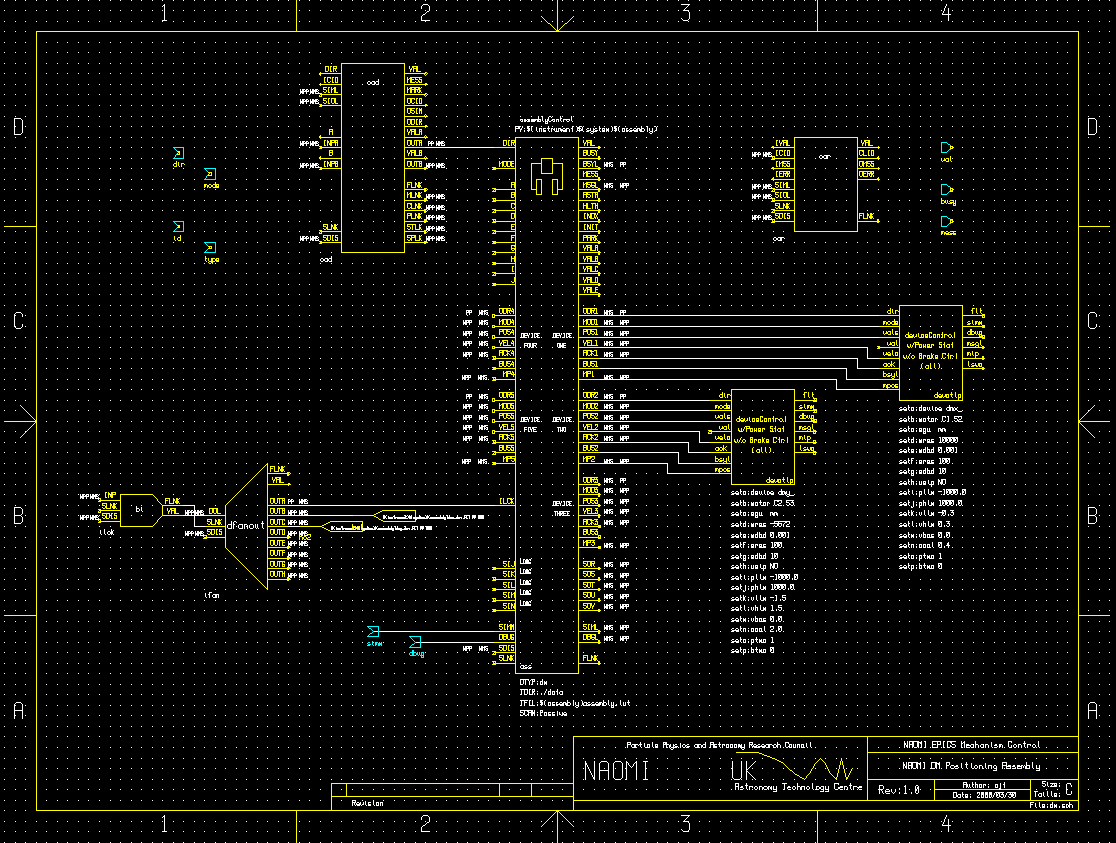
| UK Astronomy Technology Centre | Chris Tierney |
| Royal Observatory, Edinburgh | 31st March 2001 |

Links from the schematic:
The CAD and CAR records on this schematic are not used. They were included for compliance with Gemini interface standards that was eventually deemed not required on NAOMI.The DM assembly is responsible for positioning the Durham Deformable Mirror (DM) along two axes (X, Y) parallel to the mirror surface. This is acheived using two steppermotors, each of which is controlled by a deviceControl record. The DM assemblyControl record provides high-level control over these two records.
Upon receipt of a "go" directive in INDEX mode, the assembly forwards "ixlow" named positions to each of it's attached devices. These named positions are defined in the lookup tables for the devices, dmx_device.lut and dmy_device.lut, and instruct the devices to use index algorithm 4 (index to the lower limit switch).
When performing a MOVE operation, the assembly examines input fields A and B for numerical values. These are the demanded X and Y positions of the DM mirror, with respect to the center-of-field position. Only one named position, "center" (with numerical equivalent of zero), is recognised for each axis.
The center-of-field positions, relative to the two lower limit switches, are defined using the parameters dmxOffset and dmyOffset, found in the DM assemblyControl record lookup table, dm_assembly.lut. These offsets are added to the values found in input fields A and B during a MOVE operation, to compute the required demand positions for each device.
The binary input record "ilck" is used to interlock the DM assembly. This (boolean) signal is forwarded, via a fanout record, to the assemblyControl (ILCK field) and deviceControl (FLT field) records. Upon receipt of a non-zero value at the FLT field, the devices will immediately stop all motion of the DM positioning motors. The assembly will stop any operation it is current engaged in. Normal operation can be resumed by restoring the interlock signal to its default (zero) value.